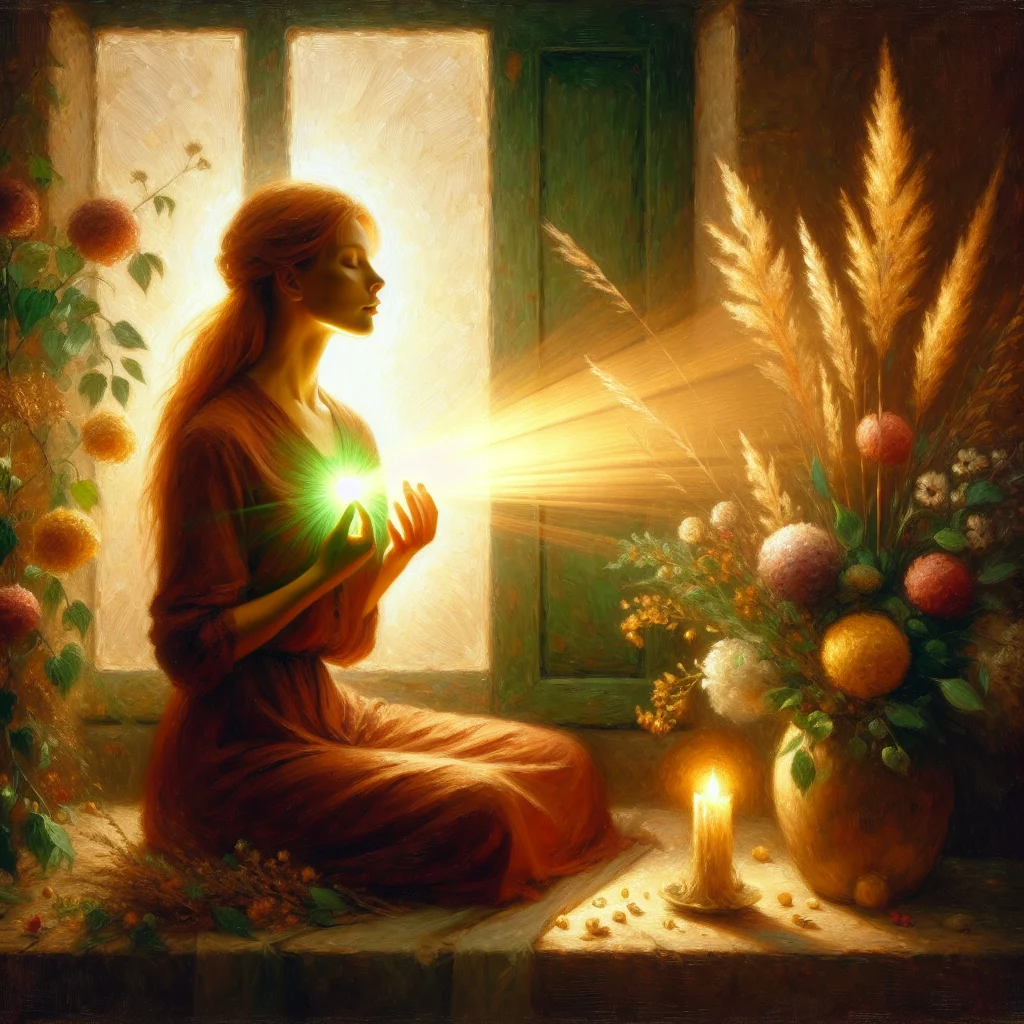Reconnect with the Present Through Chakra for Inner Peace
In today’s high-speed world, inner peace can feel like a distant dream. Anxiety, pressure, and overstimulation bombard us daily, leaving our minds scattered and emotions fragile. One ancient yet powerful way to find calm is through understanding and balancing the chakra for inner peace—your energetic key to emotional harmony and mental clarity.
The idea of chakras originates from ancient Indian traditions and refers to the centers of energy in the body. When these chakras are balanced, energy flows freely, bringing calm, clarity, and connection. In contrast, when they’re blocked or overactive, we often feel stuck or out of sync.
If you’re just beginning your wellness journey, Everyday Calm: A Beginner’s Guide to Daily Meditation provides a helpful starting point for balancing your inner energy through mindfulness.

Understanding Chakras and Inner Peace
The term “chakra” means “wheel” in Sanskrit, and according to traditional texts, there are seven major chakras aligned along the spine. Each chakra corresponds to specific physical, emotional, and spiritual aspects of our lives. The one most associated with inner peace is the Heart Chakra (Anahata).
Located in the center of the chest, the heart chakra bridges the gap between the physical and spiritual chakras. It governs forgiveness, empathy, connection, and—most importantly—love. When it’s open and balanced, we feel peaceful, open-hearted, and emotionally secure. When it’s blocked, we may feel isolated, anxious, or resentful.
Why the Heart Chakra Matters for Inner Peace
It’s no surprise that many wellness experts and spiritual teachers emphasize the heart chakra when addressing emotional healing. According to traditional yogic teachings (learn more on Wikipedia), Anahata is key to cultivating compassion and intimate relationship with the self and others.
In addition to emotional balance, a healthy heart chakra can lead to improved immune response, normal blood pressure, and even enhanced creativity. Opening this chakra doesn’t just bring “feel-good” energy; it physically affects the nervous system and overall health.
Other Chakras That Support Inner Peace
- Crown Chakra (Sahasrara): This chakra connects us to universal consciousness and higher wisdom. When active and balanced, it inspires spiritual serenity and a sense of belonging to something greater.
- Third Eye Chakra (Ajna): Located in the forehead, this chakra enhances intuition, insight, and mental clarity. When activated, it allows you to perceive situations with greater wisdom and less emotional reactivity.
- Root Chakra (Muladhara): Symbolizing your foundation, the root chakra helps establish security and stability. A peaceful life often begins with feeling safe and grounded.
If you’re unsure which chakra to focus on first, our article Which Chakra Is Best for Healing? offers a deep dive into choosing the best energy center for your needs.
Signs Your Heart Chakra May Be Blocked
So how can you tell if your chakra for inner peace is out of alignment? While everyone is different, here are some common indicators of an imbalanced heart chakra:
- Chronic feelings of loneliness or emotional detachment
- Difficulty forgiving others or yourself
- Jealousy or fear in relationships
- Physical symptoms like tension in the chest or breathing issues
If any of these resonate, don’t worry—there are simple yet powerful ways to restore your balance and reclaim peace.
How to Unblock and Align Your Inner Peace Chakra
Fortunately, working with your heart chakra—and other inner peace chakras—is accessible through a variety of healing practices. Choose what resonates most with you, and remember that consistency is key.
1. Meditation and Breathwork
Heart-focused meditations, where you breathe love into your chest and exhale negativity, can work wonders. Practices like self-love meditation in Kundalini yoga are especially effective for energizing Anahata. Breathwork techniques, such as coherent breathing, regulate the nervous system and naturally soothe the heart chakra.
2. Affirmations for the Heart Chakra
Use affirmations that nurture self-worth and unconditional love. Examples include:
- I am open to giving and receiving love.
- I forgive myself and others.
- Love is the answer to every situation.
3. Visualization Practices
Visualize a glowing green light radiating from your heart area. This not only strengthens the chakra but also enhances your emotional and physical well-being. You might also find our guide in Visualization & Manifestation helpful.
4. Healing Crystals and Oils
Crystals like rose quartz, emerald, and jade vibrate at frequencies that align with the heart chakra. Essential oils like rose, bergamot, and ylang-ylang can deepen your heart-opening practices. For more crystal insights, read Crystals for Self-Love and Protection.
5. Self-Love and Compassion Practices
Often, the path to peace begins with treating yourself kindly. Explore our powerful guide, Self-Love Is a Journey, to build self-respect and softness from within.

Chakra Healing as a Lifelong Practice
Realistically, no one achieves perfect energy balance at all times. Life is fluid—and so are our emotions. Think of chakra healing as a regular hygiene practice for your inner world. As your life changes, so does the energy you carry. Integrating tools like journaling, mindfulness, and chakra-focused yoga can make this journey deeply rewarding.
Finally, remember that inner peace relies not on removing difficulties from life but on transforming how we relate to them. When your chakras—especially your heart chakra—are aligned, you’re better equipped to meet life with calm, courage, and presence.
For deeper self-exploration and practical guidance on manifestation through your energetic system, explore Manifest Your Dreams: A Practical Guide to the Law of Attraction.
If you’d like to keep exploring, our categories Spirituality & Inner Work and Mindfulness & Meditation are filled with helpful resources.

